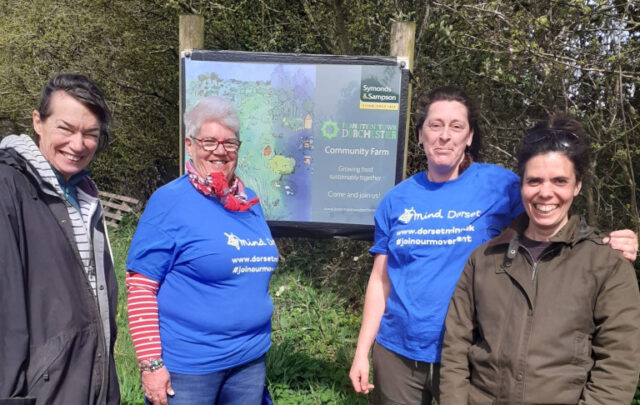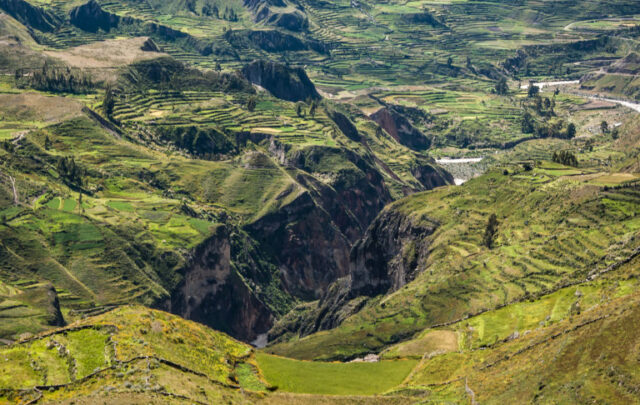
Next month, Anthony Rodale will be running in the gruelling Marathon des Sables – 150 miles through the extreme heat of the Sahara Desert – ‘the toughest footrace on Earth’. He is doing this to raise awareness of the vital connection between farming practice, soil stability, food quality and human health, and to raise funds for the SFT to help us bring about changes that will transform global food production to make it genuinely sustainable. Many African countries face huge food security problems, but here Anthony gives us a success story which should provide hope and inspiration for others.
In 2015, the International Year of Soils, the West African country of Senegal can be heralded as a leading example of increased food security and improved public health. In the past 20 years, the gradual regeneration of its cropland soil through sustainable agricultural practices has helped turn Senegal into the highly productive country it is today, with localised and diversified food systems.
One of the most exciting sustainable developments that has come out of this is the efflorescence of urban gardening around Dakar, Senegal’s capital city and other cities like Thies, and along the Ndiayes corridor. Local journalist Koffigan E. Adigbli has written about this expansion of small-scale agriculture in the city, noting that 6,000 people now work in horticulture, feeding 40,000 people across Dakar and a million more across the country. Citing the Regional Office of Statistics and Demographics, Adigbli states that between 2010 and 2011 the cultivated area in the Dakar region grew from 5,098 hectares to 8,700 hectares, while horticulture production rose from 750,000 to 860,000 tonnes during the same period. In 2011, urban gardens supplied 45% of Dakar’s food, at a value of $450 million. That’s quite an amazing boom.
Adigbli’s article highlights the success of urban food production in Dakar, where locally grown foods are now in high demand. Reading about the transformation of the city’s food systems made me reflect on how far Senegal has developed towards agricultural sustainability since my first visit to the country 27 years ago, in 1988.
In order to understand better how this urban food success story came about in Senegal I spoke with my long-time friend and colleague, Dr Amadou Makhtar Diop, who is the president and founder of the Regenerative Agriculture Resource Center (RARC) based in Senegal. When I asked him about the past 20 years of Senegalese agriculture compared to the present, he said that food production has gone a long way because more and more people are going back to farming. In the past five years, things have begun to turn around with many young professionals becoming involved in the sector. He stressed the need to cultivate these professionals and train them well in agricultural and business practices. Farmers need to understand that farming and growing food is not a quick way to make money. “It takes a long time to make a farm/garden business work, and be economically viable. People who have a short-term vision and want to make money fast will fail.” But high unemployment has also helped to create a fertile environment for people trained in agriculture or business to get into farming, market gardening and various types of added-value food production business, and this has helped the sector to thrive.
Senegalese agriculture from the time of independence in 1960 up to the severe drought in the early 1980s was largely focused on growing peanuts (ground nuts) for export to France for the manufacture of oils and soaps. Year after year of continuous mono-cropping from this production, using chemical fertilisers and pesticides, left the majority of Senegal’s best farmland in a poor, unproductive state, generating food shortages.
In 1989, the US government aid agency USAID asked Rodale International to do a soil fertility analysis study for the ‘Peanut Basin’, a region south of Dakar. One of the outcomes from the study was a model for regenerating agricultural land by rebuilding soils with native crops – millet, cowpea, peanuts and cassava. These four crops, planted in a three-year rotation, increased soil fertility, organic matter and moisture holding capacity. As part of this initiative, animals were also re-integrated back into farming systems generating a source of manure for compost and further income from the sale of animals.
With the support of international aid agencies, the Senegalese Agriculture Research Institute in partnership with Rodale International, also developed village garden training projects that were implemented all over the country. International NGOs worked in collaboration with men and women across Senegal to help create village gardens and market gardens that would benefit local communities and create better access to fresh vegetables, grown without chemicals and pesticides. By creating a local food system, villagers no longer had to travel into town to buy vegetables while, at the same time, local farmers were able to sell food to them and generate a new source of income. There was also strong demand for higher value crops such as tomatoes, mint and fruits.
Building on this, in 1995, the UN’s Food and Agriculture Organization (FAO) rolled out a micro/urban garden strategy for Senegal. It was this that propelled the numbers of urban gardens to grow around the city of Dakar. The FAO helped to create a perfect storm for rapid local and regional food development that was being supported by the international NGO finance community, the Senegalese government and local NGOs, who were training new farmers and professionals in agriculture and market gardening.
 The public has had to be educated as well about the value of fresh, local food, but, as Amadou commented, “The food and health connection is more and more recognised in Senegal today.” There is now wide acknowledgement of the impacts of eating healthy local foods and getting regular exercise. Fitness gyms have emerged in cities, and more and more people are running and walking, especially early in the morning. Senegal has very good education and outreach through schools and the media, and lifestyle ideas and trends are widely publicised and often adopted quickly by the public. Senegal’s strong food culture has also helped to increase the diversity and quality of locally grown food, inspiring much more interest in creative cooking.
The public has had to be educated as well about the value of fresh, local food, but, as Amadou commented, “The food and health connection is more and more recognised in Senegal today.” There is now wide acknowledgement of the impacts of eating healthy local foods and getting regular exercise. Fitness gyms have emerged in cities, and more and more people are running and walking, especially early in the morning. Senegal has very good education and outreach through schools and the media, and lifestyle ideas and trends are widely publicised and often adopted quickly by the public. Senegal’s strong food culture has also helped to increase the diversity and quality of locally grown food, inspiring much more interest in creative cooking.
This year, for the first time, the government put a hold on imports of onions and potatoes for four months because Senegal is producing enough of its own crops for public consumption. The government’s goal is to continue increasing and expanding the production of onions and potatoes, and soon, also rice. Amadou said that along the Senegal River where a lot of the rice is grown, farmers are currently only cultivating less than 100,000 hectares, but there is a potential to increase this to 240,000. “There is a food security opportunity in action, going on here!” he exclaimed.
If there is stronger political backing for Senegal’s agricultural productivity and sustainability, its current gains could be built on further. Côte d’Ivoire is the only other West African country that has a progressive mix of food production systems. There is too much social unrest elsewhere in the region. But, as Amadou notes, Senegal is beginning to recognise that “knowledge about how food is grown, and who grows it, is power”.





